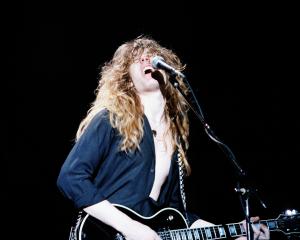
The choir’s most effective songs were those sung from alongside the aisles where the audience could hear the sequence of parts as they overlapped each other: an antiphonal surround sound. The ability of individual choristers to stand alone in this way is exceptional. The ethereal Flame (2013) by Ben Parry, a contemporary British composer, was beautifully captivating.
Mendelssohn’s Kyrie and Heilig, Orlando Lassus’ Aurora Lucis Rutilat and the encore piece Cole Porter’s Everytime We Say Goodbye achieved superior effect through having the parts so directly sung over the audience.
Mathew Recio’s sibilant How to Survive Vesuvius (2015), while sung with commitment through its tight harmonies, did not carry well in the cathedral. Leonie Holmes’ Through Coiled Stillness (2011) casts an engrossing primeval light on New Zealand bush.
Two traditional gospel songs, Soon-ah Will Be Done and There is a Balm in Gilead, completed the choir’s wide repertoire but did not show it at its best. Holst’s arrangement of the traditional English song I Love my Love was beautifully delivered.
Robert Lucas de Pearsall’s 19th-century work Great God of Love was delivered warmly. New Zealander Rosa Elliott’s Those Others 2015 is a fine composition with delicate piano accompaniment.
Tuirina Wehi’s lament Waerenga-A-Hika, commemorating the New Zealand Wars battle of 1865, arranged by Robert Wiremu, was perhaps the most heartfelt, strongly and proudly delivered by the choir standing shoulder-to-shoulder.
- Marian Poole
New Zealand Youth Choir
• St Paul’s Cathedral, Saturday, April 28












